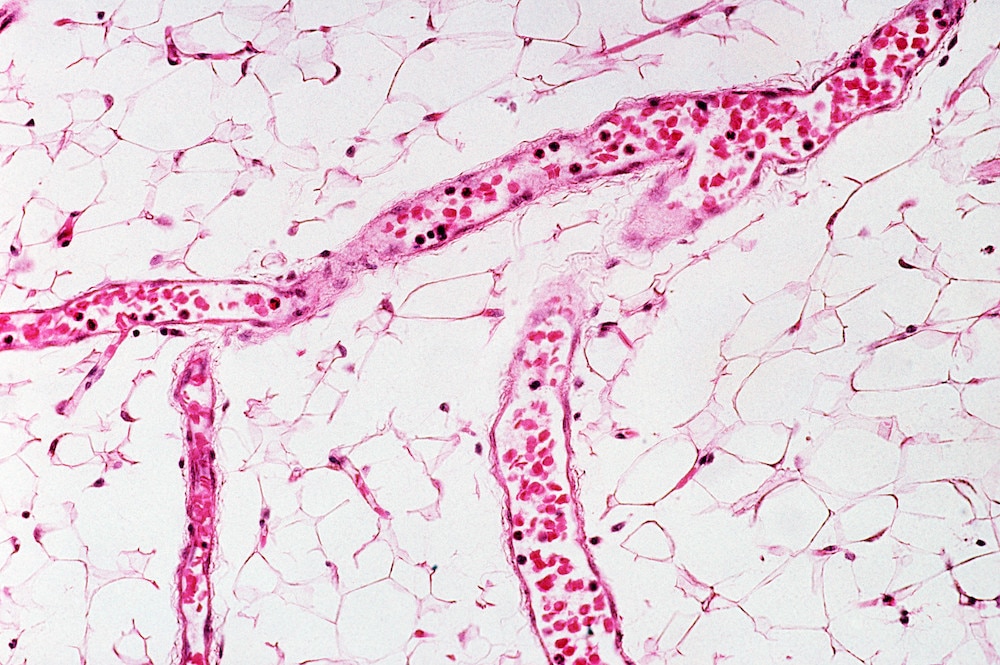Create a free profile to get unlimited access to exclusive videos, sweepstakes, and more!
Nanochip could cure The Thing's skin issues and heal injuries in the process
There's nothing wrong with rock hard skin, but it's nice to have the option.

Have you ever wanted to change something about yourself? Maybe you don’t like your nose, or you wish you were a little taller? Countless science fiction tales deal with the technological altering of one’s body in order to adhere to an aesthetic ideal. In the real world, an entire medical industry has cropped up to service those individuals who want to change the way they look.
Getting to a place where we can transform our outer appearance through the use of gene modifications or nanotechnology is still a while off, but new research has made transforming some tissues into other tissues a reality.
A new paper by scientists at the Indiana School of Medicine, the Weldon School of Biomedical Engineering at Purdue University, and their colleagues, describes the production of a nanochip capable of changing skin cells into blood vessels or neurons. Their findings were published in the journal Nature Protocols.
The device, known as a tissue nanotransfection (TNT) device, consists of an array of hollow silicon needles capable of delivering an electric field. In the process, the needles lay down biomolecules to the desired cells, instigating a change in their composition. The needle array can be modified depending on the targeted area and the desired results.
In the paper, scientists outline a process by which other researchers can duplicate their efforts to manufacture devices of their own for use in laboratory experiments and, eventually, medical therapies. Manufacturing the device takes between five and six days, and deploying it takes only about half an hour.
In experiments, scientists used the technology on mice to successfully transform cells either at the site of an injury, or for transplantation to another site. In those experiments, they were able to prevent the onset of tissue death from cell necrosis by renewing blood flow and supply to an injured area. Such a therapy could assist in healing and prevent the loss of limbs or tissues after a traumatic injury. Researchers also note it could prove useful in individuals with diabetes who are at risk of limb or digit loss.
Additionally, the team was able to generate new nerve cells and transplant them into the brains of mice who had suffered strokes. The introduction of those tissues improved recovery rates among test subjects.
The technology builds on previous research into transforming tissues, but has a few key benefits, at least for certain applications. In the past, the transformation of living tissues has involved either the introduction of a virus which then infects the cells, thereby delivering instructions for a genetic change, or the manufacturing of tissues outside of the body, followed by implantation. Both of these strategies have particular limitations the team set out to avoid.
Using a viral pathway has the potential for long-term expression of new genes. Sometimes, that’s precisely what scientists want, but that’s not always the case. Tissues which are manufactured outside of the body and later implanted have a tendency for rejection or low survival rates, minimizing the positive effect scientists and doctors hope to achieve. This new process avoids both hurdles by bringing the whole endeavor into the patient’s body and working with the tissues already present there.
Moreover, the array can be tuned by modifying the electrical current, allowing scientists to control the depth at which the therapy is delivered. The tissues are then transfected by the device within seconds. Observations of the experimental tissues showed successful transformations after only 24 hours, though gaining the amount of tissues you need can take several weeks.
With this proof of concept in hand, and a protocol for the mass manufacture of their TNT devices, the team hopes to move toward human trials. They note that the protocol should work on human tissues with minimal modifications. Additional potential applications include non-invasive drug delivery and biomarking for tissue sampling.
Lifesaving medical therapies such as those outlined in the team’s research are clearly the primary targets for this technology, but it isn’t difficult to imagine how it could be used for transformations which are a little more fun.
The ability to transform skin cells into any other tissue type has nearly limitless possibilities, ranging from restoring your diminishing hairline to turning The Thing back into a normal human man. All we need are hollow needles capable of piercing his rock-like skin.


























